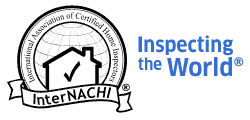Six factors to consider before installing a gas fireplace
(ARA) - A gas fireplace can add ambiance and warmth to any room, and with the cold weather, you might be dreaming of adding one in your home. Because purchasing a fireplace is not something we do every day, there are some important things to consider.
If you have lots of questions, you're not alone. It's smart to do your research and get advice from the pros. Joel Ginsberg, retail manager and fireplace expert for Fireside Hearth & Home, offers some important considerations so you get the right gas fireplace for your home.
Are you adding a new gas fireplace or converting an existing masonry wood-burning fireplace?
Many people choose gas fireplaces for the convenience. You can heat your home and enjoy beautiful ambiance by simply touching a remote control or wall switch. Whether you're starting new, or want to replace an old fireplace from the 70s or 80s, there are plenty of affordable options.
Already have a wood-burning fireplace? Consider transforming it with a cleaner and more efficient gas fireplace insert that fits directly into the existing opening. As part of the installation, two liners are installed inside the chimney; one expels the fire's combustion exhaust and byproducts outside the home, the other draws in outside air for combustion. This guarantees no room air is used for combustion which stops heat loss and protects the indoor air quality of your home. You get the benefits of gas without having to replace the entire fireplace.
What style fireplace fits your home?
The sky is the limit when it comes to fireplace design. Whether you prefer the traditional stone fireplace designs or you favor sleek modern styles, there's bound to be something to complement your home's interior design.
The look of the fire itself comes with many style options. Traditionalists prefer realistic manufactured logs with burning embers. However, if your design style leans toward contemporary, you might like options like the
Cosmo 32, manufactured by Heat & Glo. These styles are inspired by European designs that have features like linear flames that flicker in unison, unique materials like black onyx, and panoramic viewing angles of the fire. Placement is also being redefined, as modern style fireplaces are often positioned at a higher level, evoking a living piece of fine art. To find out which style is best for you visit www.fireplaces.com.
What are your heating efficiency requirements?
Did you know a gas fireplace or fireplace insert can help reduce your heating costs? Similar to the premise of a hybrid car, you can turn down your home's thermostat and
Zone Heat the rooms you use most with an efficient gas fireplace. This cuts down on the amount of fuel consumed by your furnace and can help to reduce home heating bills by 20 to 40 percent, according to the Hearth, Patio and Barbecue Association.
Do you want a vented or vent-free gas fireplace?
Depending on the manufacturer and model, gas fireplaces can be vented or unvented. Direct vented gas fireplaces have sealed combustion systems that protect indoor air quality by drawing outside air for the fire and expelling 100 percent of combustion exhaust and by-products outside the home, resulting in a safe, beautiful fire. In contrast, unvented (a.k.a. vent-free or vent-less) fireplaces lack sealed combustion or venting systems, drawing indoor air and oxygen for the fire, while expelling exhaust and byproducts, like carbon monoxide, nitrogen dioxide and moisture, into the home. While unvented units are legal in many areas of the country, some hearth manufacturers, remodelers and hearth retailers will not sell them due to safety and moisture/condensation issues.
What is your budget?
"For the most part, when people enter the store, they assume it will be expensive to purchase and install a gas fireplace or fireplace insert. Most people are pleasantly surprised at how inexpensive it can be," comments Ginsberg.
He says the average price of a gas fireplace including installation is $4,400. For those interested in a gas fireplace insert, the cost can be as little as $2,900 installed.
What is the return on investment?
These days, homeowners want to make sure the money they put into their home adds value. There is good news: Homebuyers consider fireplaces one of the top three desired home features, according to Remodeling Magazine. Also, according to the Residential Cost Handbook, a gas fireplace can add an average of $5,900 to the value of a home. Therefore when it comes time to sell, homes with gas fireplaces have an advantage.
As we go through the cold winter months, it is natural to want to warm up by a fire. Given the potential of increased efficiencies, zone heating to reduce utility bills and hours of ambiance and enjoyment, installing a gas fireplace has a multitude of benefits.
Visit hchomeinspections.com

